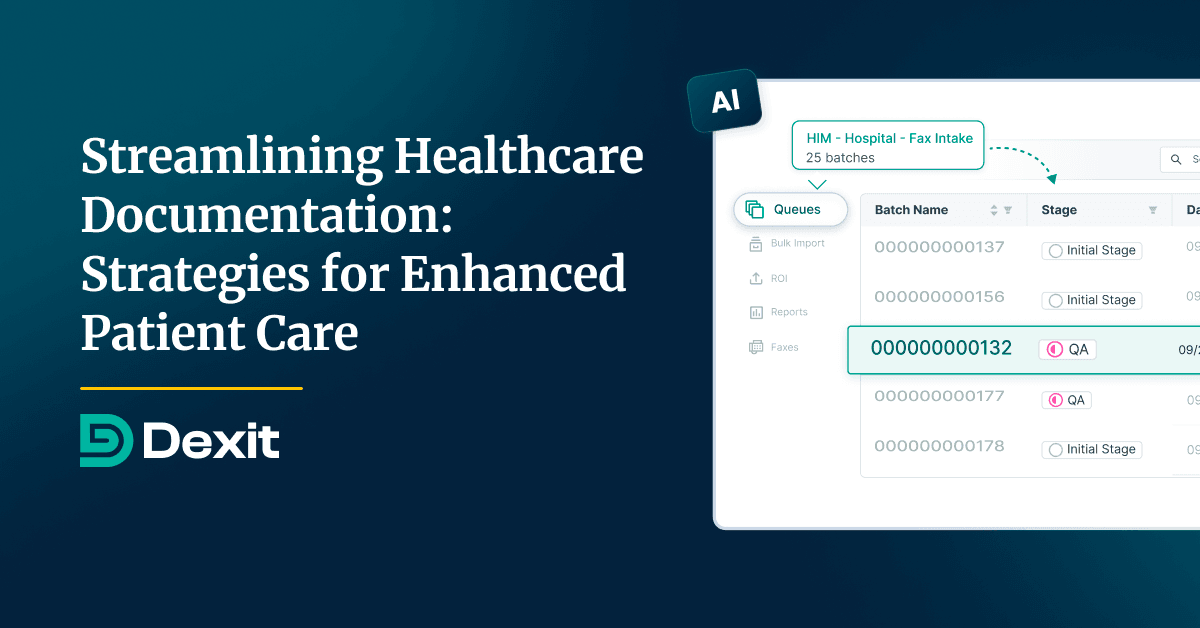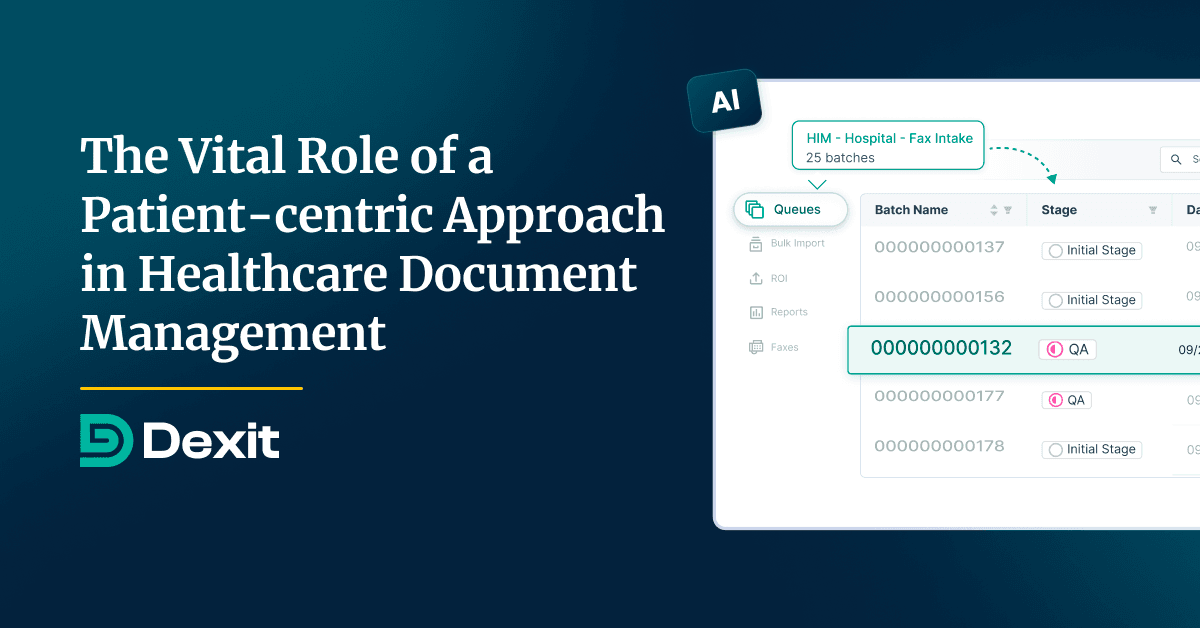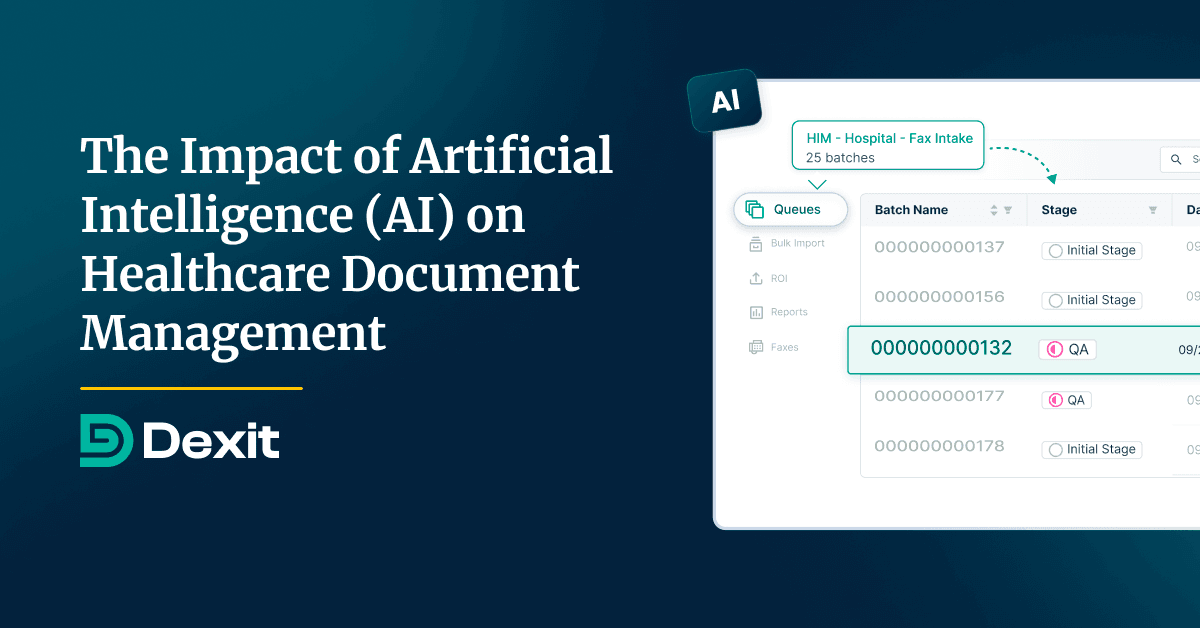
The Economic Impact of AI Automation on Healthcare Document Management
Hospitals and healthcare providers are continually looking for ways to enhance efficiency while managing …

Efficient documentation is the lifeblood of modern healthcare. It's the medium through which patient histories are recorded, treatments are planned, and outcomes are measured. With the right strategies, documentation can be more than just a record-keeping task—it can transform how healthcare is delivered.
In this article, we will explore the various tactics for streamlining healthcare document management processes, the regulatory compliances that should be taken into consideration, and ways to enhance overall healthcare efficiency.
Explore:
At the core of healthcare lies documentation. Historically, healthcare providers have been mired in voluminous paperwork, underlining a critical, industry-wide challenge—managing information efficiently while maintaining accuracy. Errors in documentation can lead to incorrect treatments, billing disputes, or worse, patient harm. It's a high-stakes area where every word counts. Moreover, the administrative burden of documentation is a significant contributor to physician burnout, with studies showing that physicians spend more time on documentation than with patients.
Inaccurate documentation can have dire consequences for patient care and safety. For instance, a chart that incorrectly states a patient's allergy could lead to a life-threatening situation. Similarly, issues with medical history or medication lists compromise the effectiveness of treatments or interventions.
In today's digital age, the deployment of cutting-edge technologies can revolutionize healthcare documentation. Implementing modern Document Management Systems (DMS) that offer advanced technologies like AI-driven tools, voice recognition software, digital signatures, and so on can help leverage the document management processes in healthcare organizations.
Some of the technologies that not only reduce the time spent on manual documentation but also improve the quality and accessibility of patient data include:
In today's rapidly evolving healthcare landscape, Artificial Intelligence (AI) emerges as a pivotal tool in transforming the documentation process. AI's capabilities extend beyond simple data entry, offering precision and speed in documenting patient encounters. By analyzing clinical notes, AI can accurately suggest relevant ICD codes and procedures, thus streamlining billing processes and enhancing reimbursement accuracy.
Moreover, AI aids in clinical decision-making by pinpointing critical information within vast datasets. Notably, AI simplifies document organization and retrieval through efficient indexing, ensuring the accessibility of the entire document library.
With AI-powered patient identification, workflows are further optimized through automatic patient-document matching, saving time and ensuring accurate chart associations. Implementing a robust Document Management System empowered by AI not only enhances efficiency but also sets the stage for streamlined procedures within healthcare organizations.
II. Cloud Faxing
Traditional fax machines are swiftly becoming obsolete with the advent of cloud faxing integrated into Document Management Systems (DMS). By adopting a DMS with cloud faxing capabilities, healthcare organizations can bid farewell to cumbersome machinery, embracing a streamlined approach to document exchange.
With cloud faxing, sending or receiving crucial files, including ROI documents, can become a seamless process. This eliminates the need for time-consuming print-scan steps, enhancing operational efficiency and reducing the likelihood of errors associated with manual handling.
Efficiency in document management relies heavily on the seamless integration of scanning devices, and modern Document Management Systems rise to the occasion by offering full TWAIN support. This ensures effortless compatibility with all contemporary scanners, facilitating quick digitization, organization, and management of documents without the hassle of compatibility issues or additional configurations.
With this compatibility, healthcare professionals can digitize patient records swiftly, enhancing accessibility and streamlining workflows across the organization. By embracing modern scanning technologies within a comprehensive document management framework, healthcare facilities optimize their operations for enhanced productivity and patient care.
Healthcare documentation is not only about providing the best patient care. It is also a means of demonstrating compliance with regulations and supporting the billing process.
Streamlining healthcare document management involves ensuring compliance with various regulations and standards to protect patient privacy, maintain data integrity, and meet legal requirements. Here are some key compliance and regulatory considerations:
While traversing through the complexities of healthcare documentation, it becomes clear the road to efficiency is also the path to enhanced patient care. By combining technology with process optimization, fostering collaboration, and maintaining a relentless focus on patient outcomes, healthcare organizations can achieve a new standard of excellence in documentation. The challenges are significant, but so are the rewards.
Join over 3,200 subscribers and keep up-to-date with the latest innovations & best practices in Healthcare IT.

Hospitals and healthcare providers are continually looking for ways to enhance efficiency while managing …

The adoption of a patient-centric approach in healthcare document management is a crucial aspect as …

The advent of Artificial Intelligence (AI) has signaled a revolutionary shift across various sectors, with the …